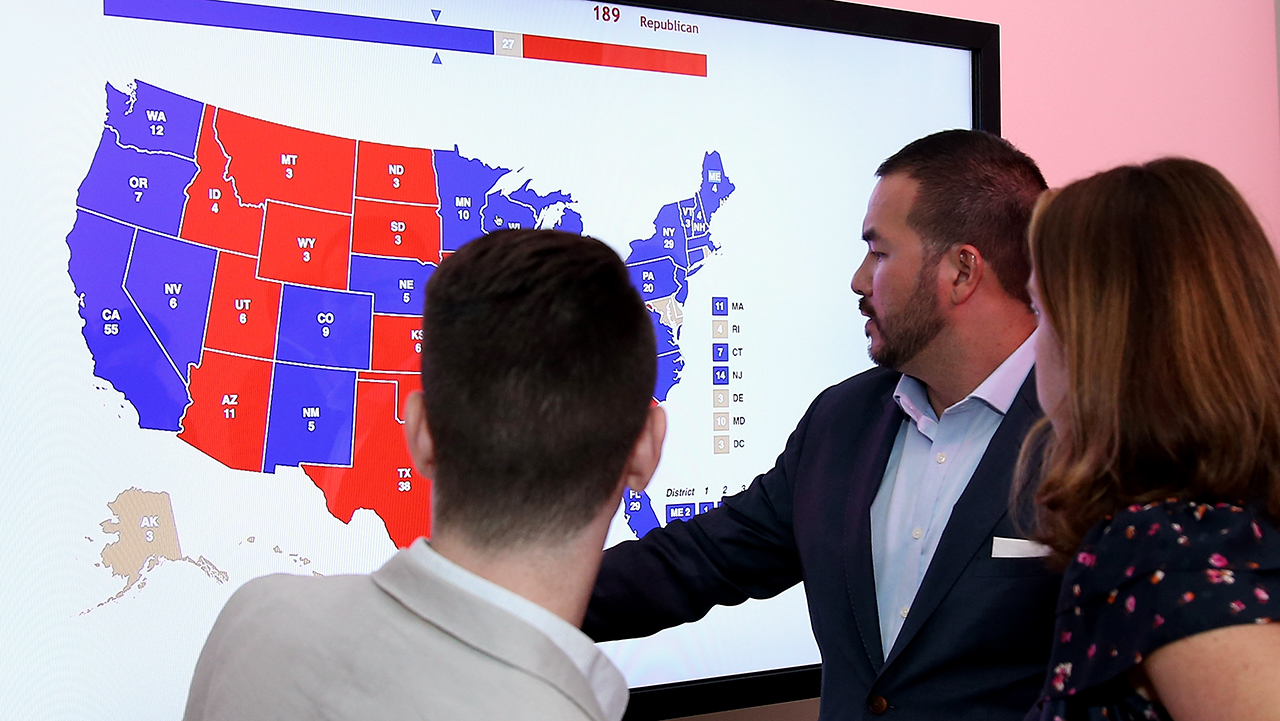
The 2020 U.S. presidential election is less than a year away. A wide field of Democrats are vying to become their party’s nominee, and Donald Trump is running for reelection amid an escalating impeachment inquiry in Congress. Already, public attention is turning to the ability of polls to accurately measure public opinion in the race, particularly after some polls missed their mark in 2016.
The good news is that polling in the United States is not “broken,” as my colleagues recently explained in a field guide to the current state of the industry. While some individual state polls did fall short in 2016, it was not an industry-wide failure, and rigorous national-level surveys turned out to be quite accurate by historical standards. High-quality surveys, in other words, remain a trustworthy tool for measuring public opinion.
As 2020 approaches, here’s a preview of how Pew Research Center is approaching the election, both in terms of how we plan to conduct surveys and other studies and what we plan to explore:
Most of our U.S. surveys in the 2020 election cycle will be conducted online. The U.S. polling industry has undergone major changes recently, even within the past four years. Telephone response rates have continued their long-term decline, making it harder and more expensive for pollsters to reach a random sample of Americans this way. Partly in response, many pollsters have started conducting surveys online – a format that has become increasingly viable now that about 90% of U.S. adults use the internet.
The Center is among the organizations that now primarily conduct U.S. surveys online (though we occasionally still do telephone surveys, too). In the months ahead, most of the surveys we do on U.S. political subjects will take place online using our American Trends Panel.
Our online surveys are conducted using a randomly chosen panel of respondents, reflecting the full range of opinions in the country. The American Trends Panel is a random sample of more than 13,000 U.S. adults we recruit by sending snail-mail invitations to home addresses around the country. Once people agree to take part, they are invited to take surveys online; respondents who don’t have internet access at home are provided with tablets and data plans so they can participate, too.
The surveys we conduct using the American Trends Panel are probability polls, which means every member of the U.S. adult population has an identical (or at least known and nonzero) chance of being included in the sample. This approach ensures our surveys are nationally representative. Using a panel comes with other advantages, too. For example, since we repeatedly survey from the same group of panelists, we can track the same individuals over time to understand how and why their opinions on a particular issue or candidate might change.
Probability-based surveys differ from online opt-in polls, in which respondents are not randomly selected but found in other ways, from being recruited through ads on websites or simply because they signed themselves up. One upside in these types of surveys is cost. One downside is that self-selected survey takers are not necessarily representative of the nation as a whole. While some online opt-in polls have built a solid track record so far of representing the entire nation, others have not.
We’ll be augmenting our surveys with other forms of research that can shed light on the 2020 dynamics. While surveys will make up much of our work, we’ll continue to do non-survey research about demographic trends that could have important implications for 2020 and beyond. Among our recent demographic findings: The 2020 electorate will be the first in which Latinos make up the largest racial or ethnic minority group, overtaking the number of black eligible voters for the first time.
At the same time, our Data Labs team will use computational methods to weigh in on other aspects of the election, including what elected officials are saying on social media and how Americans are engaging with the issues of the day on these platforms.
As we did in 2016, we plan to focus on the “tides” of public opinion, not the “waves.” Practically speaking, that means we plan to study many of the big-picture questions surrounding the election, while leaving the daily ups and downs of the candidates and campaigns for other pollsters to measure. This is the same approach we took four years ago.
Among the issues we plan to study in the coming months:
- The factors driving partisanship. The nation’s deep partisan divisions are well-documented. But we’ll increasingly focus on some of the reasons behind those divisions – and whether, in an era of record polarization, there is still a coherent “middle” in U.S. politics.
- Politics in a changing nation. Among other things, we’ll be examining the factors behind the rise in women’s political participation, pegged to the 100th anniversary of the passage of the 19th Amendment. And we’ll explore the intersection of faith and politics in the context of 2020.
- Confidence in democracy. One question that has regularly surfaced since 2016 is how Americans view the functioning of their democracy, including in the context of presidential power, checks and balances, and the independence of federal agencies. We’ll examine this issue in greater detail.
- Information, misinformation and Americans’ political views. We’ll be tracking how Americans get factual news as well as misinformation during the election and how it relates to their views about political events and the campaigns.
- America’s role in the world. The 2020 election will have repercussions far beyond the nation’s borders, and we’ll continue to ask Americans about their opinions on foreign policy and parties’ positions on issues such as foreign trade, international engagement and the use of military force.
With the first primary votes soon to be cast, my colleagues and I are looking forward to exploring the dynamics that will define the 2020 election.
Michael Dimock is president of Pew Research Center.
